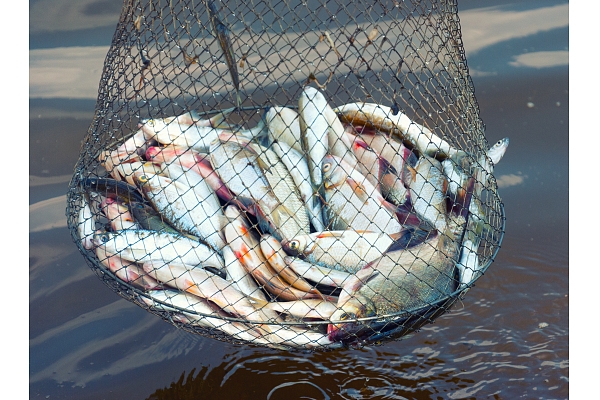Fisheries industry going through a "restart"
Fisheries in brief
• 686 Latvian fishing vessels and coastal boats were actively involved in fishing activities in the Baltic Sea and further on. In 2016, 81,305 tons of fish were caught by these vessels.
• 108 fish processing companies operate in Latvia. Around 3,000 people are employed in the fisheries and fish processing industry of Latvia.
• Sterilized canned fish producers account for 55% of the industry’s turnover.
• Average annual turnover is over EUR 220 million, and companies plan on doubling turnover in the next five years by increasing export and production.
Two-fold increase in export volumes
In 2016, Latvia exported its fish products to 33 countries. The foreign trade balance of Latvian fish products and canned fish remained positive in 2015 - +3.4 million euros. In the first six months of 2016, compared to the same period of the previous year, export volumes increased more than two-fold and reached 57,400 tons. The increase in the value of exports reached 38.8% to EUR 58.3 million. In the first half of 2016, the export of fish products (excluding canned goods) to EU countries increased by 70.7% to 11,200 tons, however the proportion of Latvia’s overall fish exports to the EU reduced from 60.1% to 40.7%. Amongst countries within the Commonwealth of Independent States (CIS), 11.5% of Latvia’s total fish exports went to Ukraine, followed by Moldova and Kazakhstan. In the first six months of 2016, compared to the same period last year, there was a 50.4% reduction in the export of canned fish products, reaching a total of 12,800 tons. Meanwhile, there was a 19.1% reduction in the value of canned fish exports, reaching EUR 33.3 million. After Russia introduced its embargo of Latvian fish products, between January 2015 and June of 2016, frozen fish product exports commenced in ten new markets, with the total value reaching EUR 0.26 million, which is 0.2% of Latvia’s total export value. In the canned fish segment, exports have been launched to 11 new markets during this period, like, for example, to China, Egypt, Hong Kong, Macau, Mexico, New Zealand, Somalia and others, with a total value reaching EUR 0.4 million, which is 0.3% of Latvia’s total export value.
Fisheries industry going through a "restart"
Thanks to much determination and hard work in finding new markets, the fish processing industry in Latvia in 2016 went through a "restart" period, the head of the Latvian Union of Fish Processing Industry Didzis Šmits points out. Even though the closing of the Russian, Kazakh and Belarussian markets, as well as the overall economic situation in this region, was a huge blow to the Latvian fish processing industry, the many years of work on creating new products and finding new markets clearly shows that that the future remains bright for the sector. "We are speaking about a "restart" of the sector," he said. He also pointed out that another positive aspect is the recognition the Latvian fish processing industry received at the world’s largest food product exhibition – Sial 2016, which was held in Paris in October. "Four years ago, the sector put forward several new common objectives in regards to product development and finding new markets, which also included the production of sardines with high added values. This Sial Paris exhibition clearly showed that, first of all, companies within the sector were not mistaken in determining new markets, as well as a simple truth – Latvia remains global player in the processing of smaller fish. The knowledge, experience and traditions the sector has gained over the past 150 years is the basis for Latvia, as a fish processing giant, to successfully be able to compete with any other player in the world," said Šmits. He also informed that the new Latvian fish product Smoked Petites Sardines, which is produced by Karavela Ltd, received recognition from international experts during the exhibition and was includes on the Sial 2016 innovative products stand. Smoked Petites Sardines was praised not only for its high-quality, but also its innovative packaging solution, which is something new within the fish canning industry. The Latvian fish processing companies Gamma-A Ltd and joint-stock Brīvais Vilnis were the first companies in the world to introduce such packaging, but has now become a sort of identification symbol for the sector, especially in regards to such products as Brisling Sardines and Les petites sardines de Riga.
In the search of new export markets
After the Russian embargo was put into place in 2014, Latvian fish processing companies continued to diversify export markets and actively look for new markets to sell their products. In 2016, fish processing companies began exporting prepared and canned fish and sea products to such countries as Egypt, Hong Kong, Iraq, Panama, Papua-New Guinea, Somalia and Taiwan. However, the greatest increase in the export volumes of prepared and canned fish products was to China – in the first half of 2016, export volumes to China increase two-fold when compared to the total volume of exports in the whole of 2015. For the first time ever, the EU became the leading country group Latvia exported its canned fish products in 2016. In the first six month of 2016, 59.8% of Latvia’s total export of prepared and canned fish products was exported to the EU. Taking into account the overall reduction in the export of canned fish products, it must be pointed out that during the first six months of 2016, there was a 7.3% increase in export volumes to the EU, as well as an 11.2% increase in exports in monetary terms when compared to the first half of 2015. The greatest increase in export volumes of prepared and canned fish products was to countries located in the eastern parts of the EU, including Estonia, Cyprus, Lithuania, Poland, Romania, Slovakia and Hungary, while export volumes to the Czech Republic and Bulgaria saw a reduction. Amongst those countries located in the EU’s western regions, there was a 43% drop in the export volumes of prepared and canned fish products to the Netherlands, and 80% reduction in the export of these products to Spain, and a 2% reduction to Germany. However, due to the fact that there was an increase in export volumes to all other countries located in the EU’s western regions, this compensated the reduction of exports to the above mentioned countries. Latvia exports canned fish products to 55 countries. Despite the fact that the largest reduction in the export of canned fish products in the first six months of 2016 was to CIS countries when compared to the same period of the previous year, the CIS market remained the second largest export market of Latvian prepared and canned fish and ocean products. In the first six months of 2016, compared to the same period in 2015, there was an 80% reduction in export volumes in terms of tons, as well as monetary terms. At the same time, the proportion of Latvia’s total canned fish exports to the CIS fell from 67% to 26%. Amongst the CIS countries, the largest reduction in exports was to Russia (by 11,900 tons), which was due to Russia’s decision to ban the import of Latvian canned fish products. Furthermore, the Russian embargo also led to a reduction or complete halt of the export of canned fish and ocean products to other countries with which Russia has a customs union with. Latvian made canned fish products are not exported to Belarus and Kazakhstan anymore, while export volumes have reduced in such countries as Armenia (by 63%), Azerbaijan (by 65%) and Moldova (by 10%). There has also been a substantial reduction in demand for Latvian canned fish products in the Central Asia region – in Kyrgyzstan by 41%, in Turkmenistan by 52% and in Uzbekistan by 51%. Meanwhile, there was a substantial increase in exports of Latvian prepared and canned fish products to Ukraine and Uzbekistan, by 96% and 39% respectively.
Most popular canned exports – sprats, sardines and sardinella
The most exported Latvian prepared and canned fish products were sprats, sardines and sardinella (54.3% of total canned fish exports), followed by canned mackerel products (22%), canned herring products (6.4%), canned salmon products (2.5%), as well as canned mollusks and other types of shellfish (14.8%).
EU funding important for sector
During the current EU planning period until 2020, a total of EUR 44.6 million has been made available to modernize the fisheries industry. Smaller ports, ship owners and fishing associations have EUR 24 million worth of co-financing available. Furthermore, EUR 34 million worth of EU funding has been made available until 2023 in the program Productive Investments in Aquaculture.
Useful websites:
• Ministry of Agriculture www.zm.gov.lv
• Central Statistical Bureau www.csb.lv
• Latvian Federation of Food Enterprises www.lpuf.lv
• Union of Latvian Fish Processing Industry www.cannedfish.lv
• Agricultural Data Centre www.ldc.gov.lv
• Food and Veterinary Service www.pvd.gov.lv





